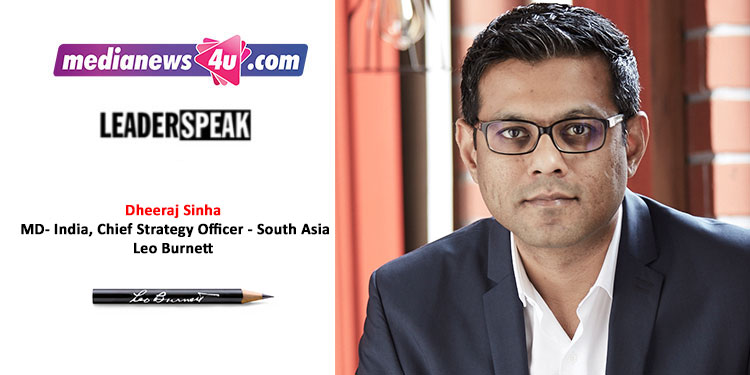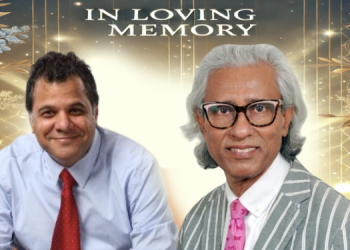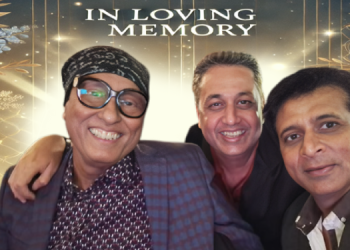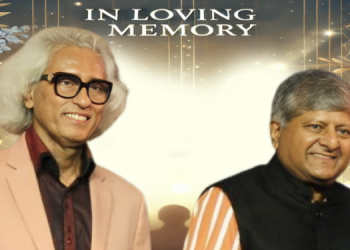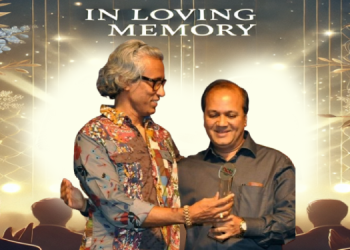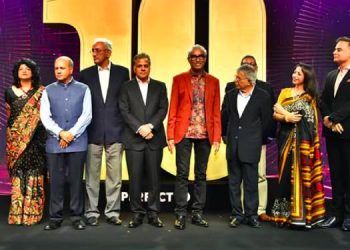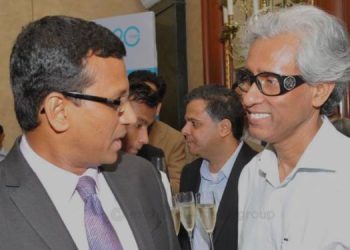Dheeraj is the author of a highly acclaimed book ‘Consumer India – Inside the Indian Mind and Wallet’, published in 2011. His second book, ‘India Reloaded – Inside the Resurgent Indian Consumer Market’ was published in June 2015
Dheeraj as a Strategist, has worked on brands and businesses across markets such as Malaysia, Singapore, Indonesia, Vietnam and Bangladesh. He has spent time across categories on brands.
In this Leaderspeak, we speak to Dheeraj Sinha, Managing Director – India, Chief Strategy Officer – South Asia at Leo Burnett, on his vision for Leo Burnett and way forward in the new normal world.
You have authored some critically acclaimed book, can you take me through your thoughts?
I have written two books, the first one was in 2011 and it was keeping the Indian Consumer mind-set in mind and collating it, the reason to write that book was that I was witnessing and seeing a new India emerge in terms of value system versus a lot of understanding of the Indian consumer and culture in the market was informed by the earlier view of India, a slightly more traditional view of India. I had this whole idea of The New Indian living with a warrior mind-set, or what I call the Shatriya values and from that culture decoding, as to how this new India is navigating the ideas of beauty, navigating the ideas of food, and so on and so forth. It was actually a take on how a new India is emerging from the force of old India and still not becoming western but finding its own way of life. The idea really was to add to the body of knowledge and inciting and thinking on how this would emerge and that was the first book. The second book that I wrote was titled ‘India Reloaded’ where I realized that after about 10 – 15 years of economic liberalization, our seeing that collectively as a business community and as a marketing community, there were many mistakes we had made so for example, we had over predicted the size of the consuming class in India and therefore gone and made investments which never bore fruit and a lot of companies are still reeling under some of those decisions. Similarly, I realized that this whole change that India only likes value was actually faulty because I was looking at India’s wanting to upgrade, they wanted more for less, rather than less for less. I also realized that they were ideas like jugaad and they were actually faulty ideas. Jugaad actually means, it is okay to skip steps, have a suboptimal product that you can have a system which is held together by duct tapes and I wanted to write about these so that our lens to market to India gets corrected and then a lot of those ideas that I wrote about have now become common currency.
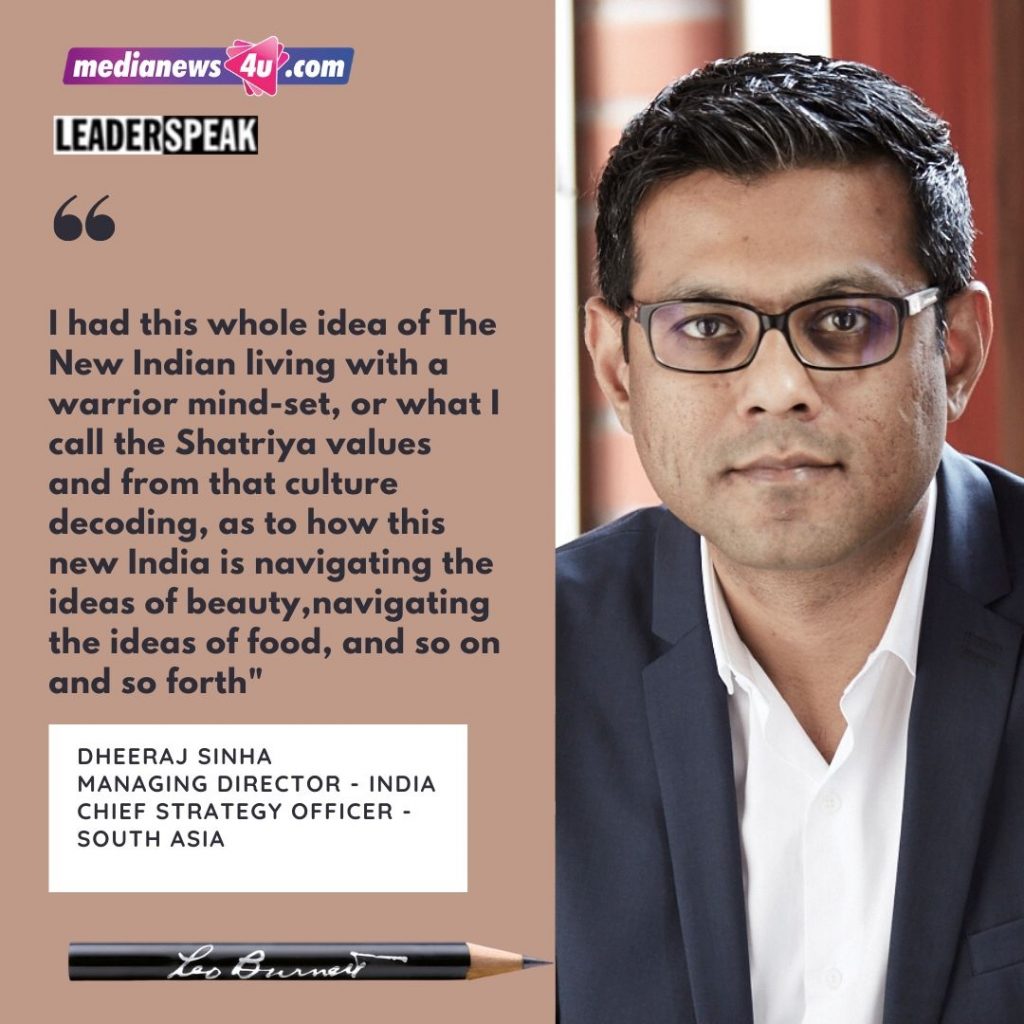
Now people need to talk to people and understand that whether you are talking to the bottom of the pyramid or rural India, you got to sell premium products you cannot sell standalone products and those were the two books and the context of writing those.
20 years of advertising and you have handled some fairly big brands, so how has that journey been?
I got into advertising by accident, like many other people in advertising. I was an economics honour student, was good at debating etc. and I said okay let me give communications a shot and I entered MICA. MICA opened my eyes to advertising and I loved it and I embraced it. My principal has always been that I have always looked at myself and said, what I am adding to this industry, and what is this industry adding to me. I always had that lens.
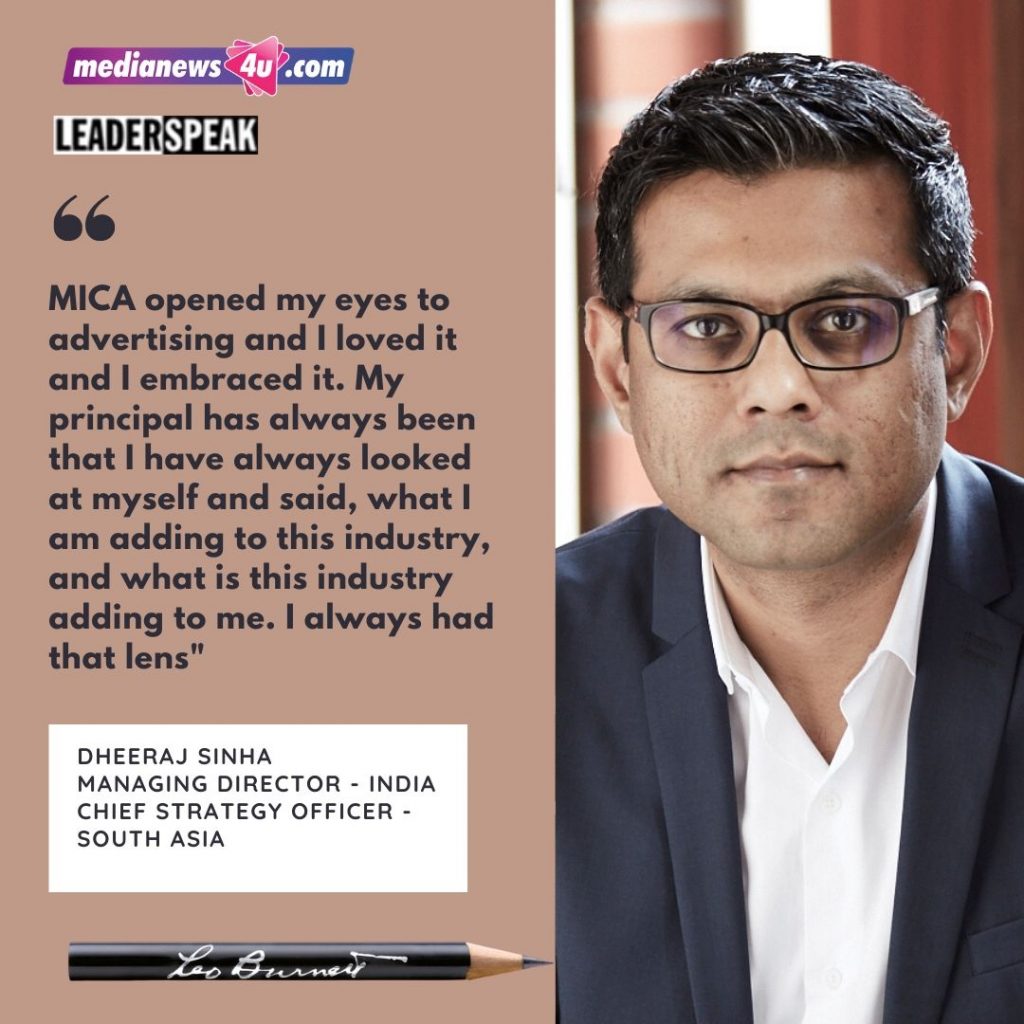
Nobody writes a book at 30 to 33 of age, but I did that because I have always questioned myself that what am I bringing to the table and especially if you look at our business there are a lot of people who made good fortune of themselves when they go out and they deride the industry. That is terrible because, my question to everybody is what are you giving back and what are you building as a leader for the business. I embraced advertising in all its heart and I grew up in strategy doing strategy planning for Reckitt Benkiser, ITC and it resonated. ITC was my first pitch and then Pondicherry tourism, the logo and everything and it was very early days, then grew up to head strategy planning departments, then to run up to strategise for Asia Pacific, I have spent 10 years between Bates and Grey running Strategy Planning Department for their APAC region. Then I got tired of the helicopter business I used to be travelling 15 – 20 days between Malaysia, Singapore and other APAC markets.
It was getting tiring and more than that I was not owning anything. I was not owning one culture, one business idea, I was spread across 15 countries and therefore I took the Leo Burnett job, to Head Strategy Planning for India and South East Asia. Then the charge came to run the business and I become the managing director. If I really want to bring about a change and to build an agency what I believe in and then I cannot fire on somebody else’s shoulder, I have to pick up the mantle and run with it, be responsible for my decisions, that has really been the journey and it is amazing in terms of what we are building at Leo Burnett what we call the India’s number one new age agency and that is the focus and the interventions are at mini level.
The first thing I realized is that we crib about the talent in this business but we do very little for the talent, so everybody wants to just hire from the market nobody is trying to open the funnel, one of the first things I did was to launch free recruitment programs, now we recruit from undergrad colleges like SRCC, Jai Hind, Christ Church for the undergrad recruitment program that we run, we started going to colleges such as Ashoka, MICA for a graduate recruitment program, we had about 30 odd people at the opening of the funnel. We have started Fast Track programs for people who are doing well, in 3 years they get to a level, that if they were to go to any prestigious MBA college and re-join the business.
We have got an hourglass structure there are leaders, and there are young people who are front facing. In many agencies we say that we are a young business and you are left behind. We are not that agency I mean in our presentations pitches, plan meetings young people, presenting their work doing really good work and winning, making young people forefront. We have done leadership through democratic decision making, classical if you look at most agencies, they are individual and personality led, what we are trying very hard is not to build agency on personality, we are trying very hard to build agency around people. We have continuous town halls and zoom has held that in a way that all 50 leaders come together every Tuesday to discuss how the agency is doing, my view is that it is not my agency or Raj’s agency it is everybody’s agency and everybody makes Leo Burnett.
It is a huge amount of initiatives on getting quality talent on board from the best of the institute’s nurturing, providing them an environment to succeed, flourish and building an agency that belongs to people, rather than which belongs to the management. Then bringing in new ways of thinking of using data, using technological and when I say technology, I do not mean digital. I mean using technology to create the anti-crash system that we created for HP, that goes home to solve other problems, if you see last month we launched weddings from home for Shaadi.com and that is using technology and solving a real problem.
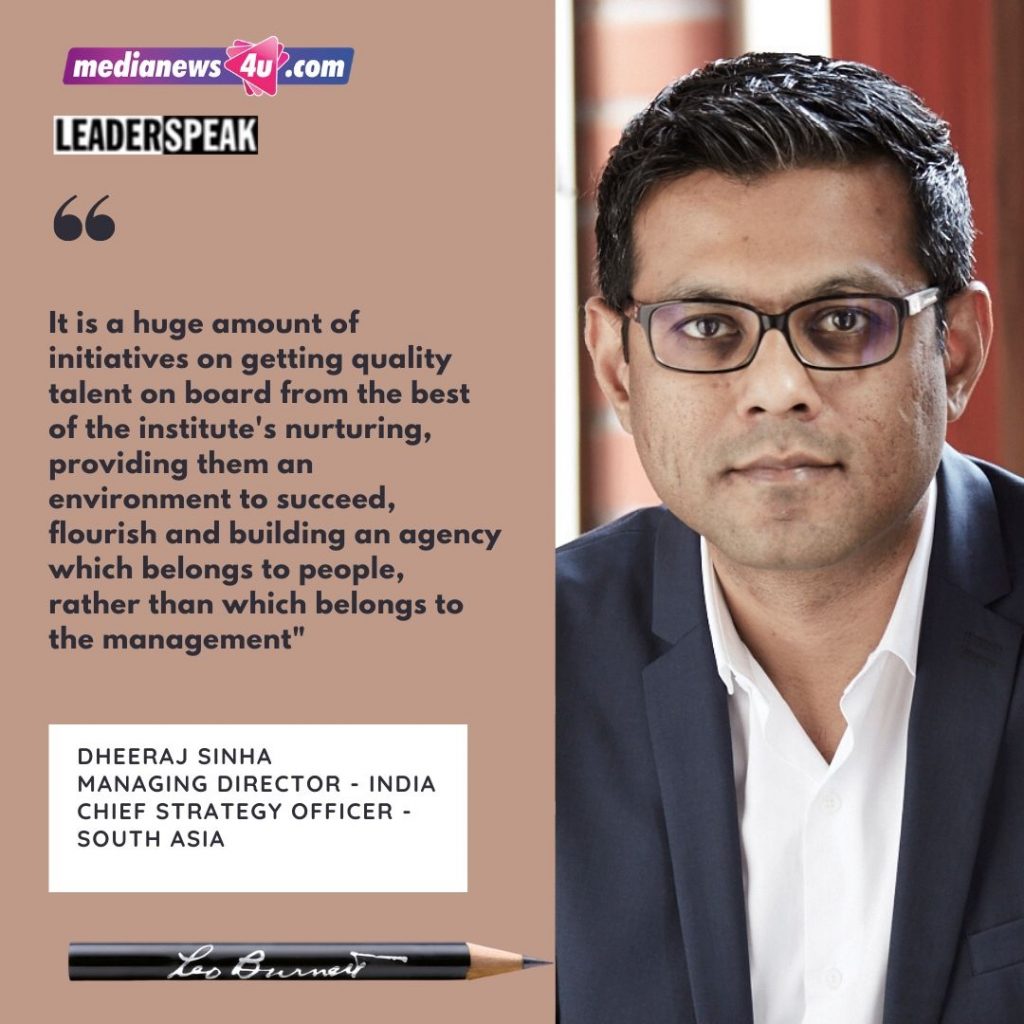
In India marriages happen around Muhurat and weddings happen only during certain months of the year. When people want to get married they want to get married in the great Indian wedding style, they do not want to get married by signing a piece of paper. So how do you give them the same experience online, we got sangeet, makeup, choreography and we managed to build that entire ecosystem around the great Indian wedding. That is what I am proud of being able to build an agency model of the future in a real sense.
As MD India and Chief Strategy Officer, India, and South Asia, how are you dealing with this pandemic both in the organization and with the clients?
We realized very early on the onset of the pandemic was that the biggest thing which would be required in these times is to hold each other’s hands and navigate and more so in terms of clients, it was very clear that no client is going to go right there and there was no model of success on this and there was no tool kit or framework. The first thing we launched a framework, called 036, the whole framework is based on the fact that if you look at the business and branding are focused on the long term, you make a five-year plan and you have a 10-year brand vision and so on and then once you have discovered the long term objectives and the short term is basically led to tactics. But what COVID needed was a short term strategy approach again so we created this whole module, which was around the workshop and we call it zero, 3 and 6. Zero means, what the brands should be doing now and what the brands would be doing three months from now, and what should the brand be doing six months from now, based on the culture use of 036, that can be mapped through data and culture understanding the map, how people’s minds were changing.
We realize that people are going back to things which give them comfort, so nostalgia and comfort food was becoming big, how do we use that for brands and businesses, we built this culture and we ran workshops with clients day in and day out, you will see 20 pieces of work in last two months across clients coming on the 036 module. That was the first big step up and help navigate our clients through the system and our teams would have worked harder during the lockdown because of these modules and workshops than they were doing before but we realized that if we don’t do this now, they will kind of sink and so will our clients, second is if you look at an agency, except for the senior-most people who bring down the average age, it is a very young workforce, average is anywhere between 28-30 years old, how do you connect with people on one on one level, we have these town halls that we are doing on a regular basis. We are equipping all our leaders to be able to talk to their team almost every day once or twice in smaller groups, as the biggest thing that we need to keep up in these times is the energy levels. If we lose the energy and motivation of the people we lose everything and I am not worried about the business I am more worried about the motivation of people.
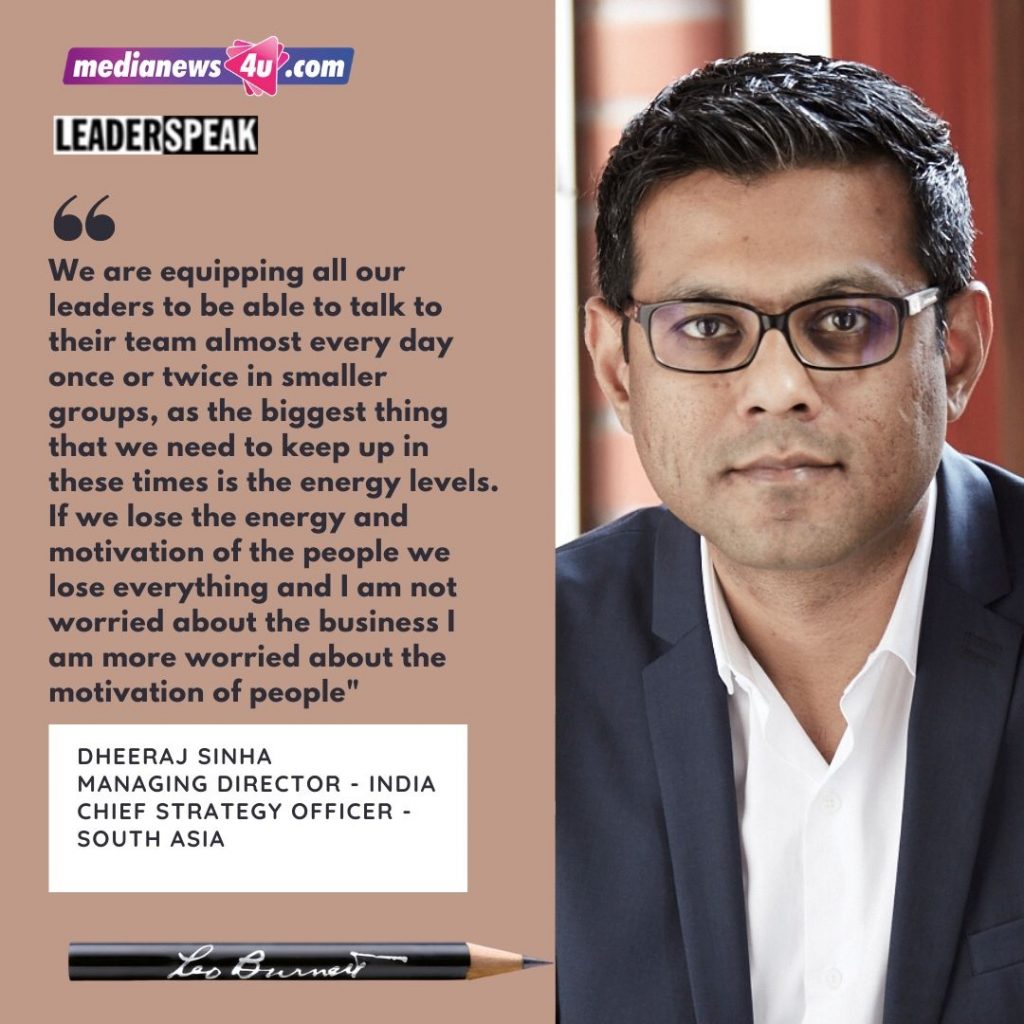
These are the things which have held us in good stead is that we are doing new business pitches and we are winning new business pitches online. In fact, if you look at our product, whether it’s the campaign which are going out or the quality of pitches that we are putting together in no way inferior to what we were doing when we were working from office. It is absolutely fantastic led by data, the videos etc. are really amazing. That is really our approach to maintaining the COVID.
What is your strategy to stay ahead of the curve?
My first big strategy is talent and that challenge is my biggest edge and on talent I am okay to open the funnel for the industry I know that some of these people will get approached by other businesses, but that is fine. I mean I cannot be scared of that and not get the best people on board. I am getting into the industry people who stop coming to the industry from the best of the colleges in India and nurturing, growing them and putting them in the forefront. The second biggest strategy is shifting the whole framework from just being an advertising agency to being a solutions provider, we are using creativity to solve real problems, ‘Weddings from home’, ‘HP from Home’ are examples of that, at any given point in time, there are many projects running in the agency where we are working with clients, develop a product or develop a platform because creativity in today’s time is not required only to write a television ad or a print ad and creativity in today’s time it is required to solve client’s business problem. I never crib about media spend is going down, advertising is not going to help that is not my trip at all, as I am using creativity to solve client problems and there is a huge demand for that.
The third is obviously leading the whole thinking through data and better understanding of platforms, everything that we do right from investing in data, data source and we have a team that does data understanding for us and equipping our people through technology. It is real hard-core technology and not just digital features, so when you are developing platforms and interestingly India is a country where technologies are easily available and not expensive. We as an agency are investing on these to keep ourselves ahead of the curve.
We are seeing a global slowdown, how are you envisaging India’s AdEx growth post COVID-19?
Obviously there is a slowdown, there is impact of people’s propensity to earn and therefore, the impact is on people’s propensity to spend as well. There will be an impact on India, as we are a connected world, however, I do not think that there is gloom and doom all across. I also feel that today is a terrible predictor of tomorrow, if you today run a sample survey to 20,000 people to ask them that in next three months, do you think you will be going on a vacation and they will say no, if you ask them in the next three months are you going to go out and spend money buying clothes the answer will be no. Come September/ October and if you feel that things are getting a little better and people are going to step out and spend money. We have to be careful about the gloom and doom on the basis of a 10,000 sample, which a lot of consulting companies are doing right now. I am a huge suspect of these surveys.
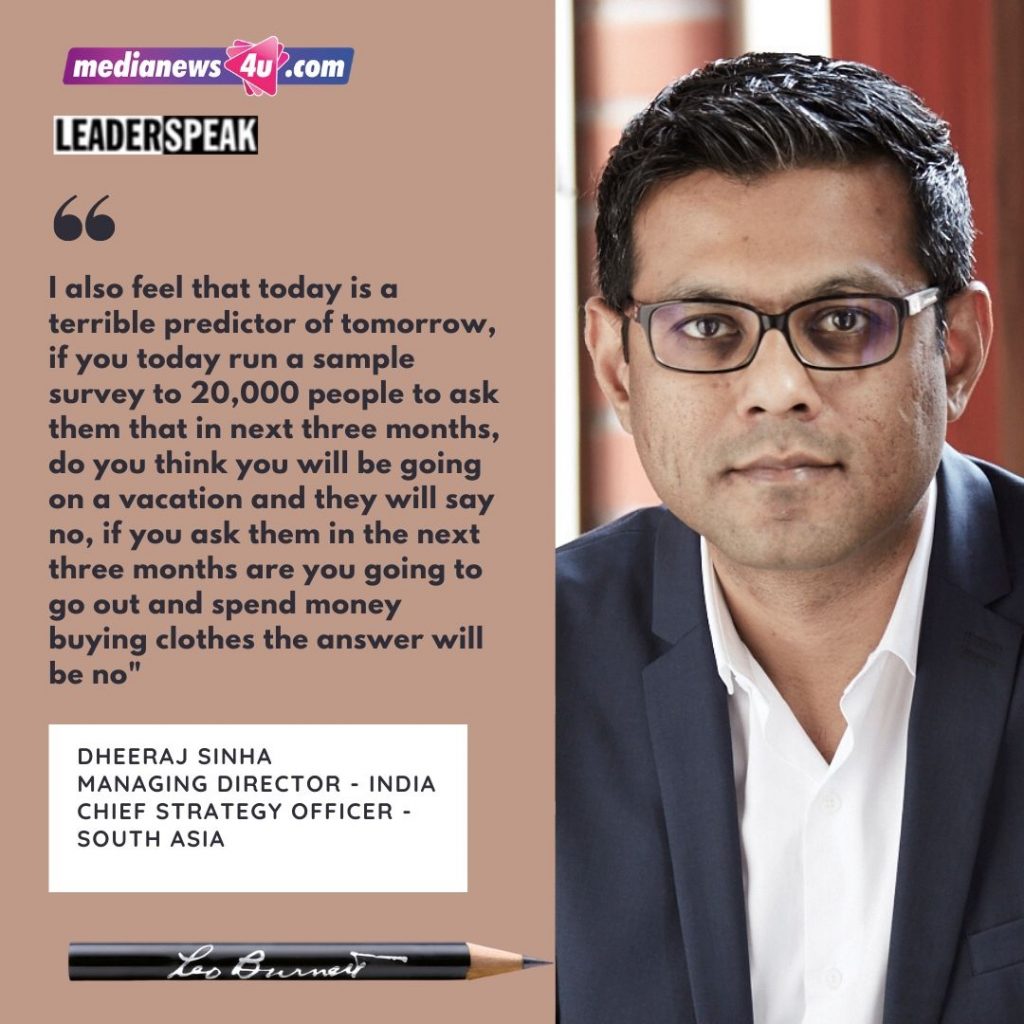
The new reality mix of old and new, we will see safety measures taken, sanitisation procedures etc. but at the same time we would want to experience a sense of freedom, would want to drive out to a place and have a small vacation, and eat at an open air restaurant. There is an impact but opportunities will come and buying of personal transportation will take off in a big way post COVID and we are seeing that curve. People will buy personal vehicles whether wheelers or even second hand cars, as there would be a fear of using public transport and we can see that curves already. Once people get out of this lockdown probably in 6 months’ time, there would be big investment in home improvement, as they were at home for all these months and they know every wall and every door and know exactly what needs repairs. It is a cultural understanding that does not need rocket science, or a huge amount of survey to get to those conclusions. There will be setbacks but it will take off wonderfully.
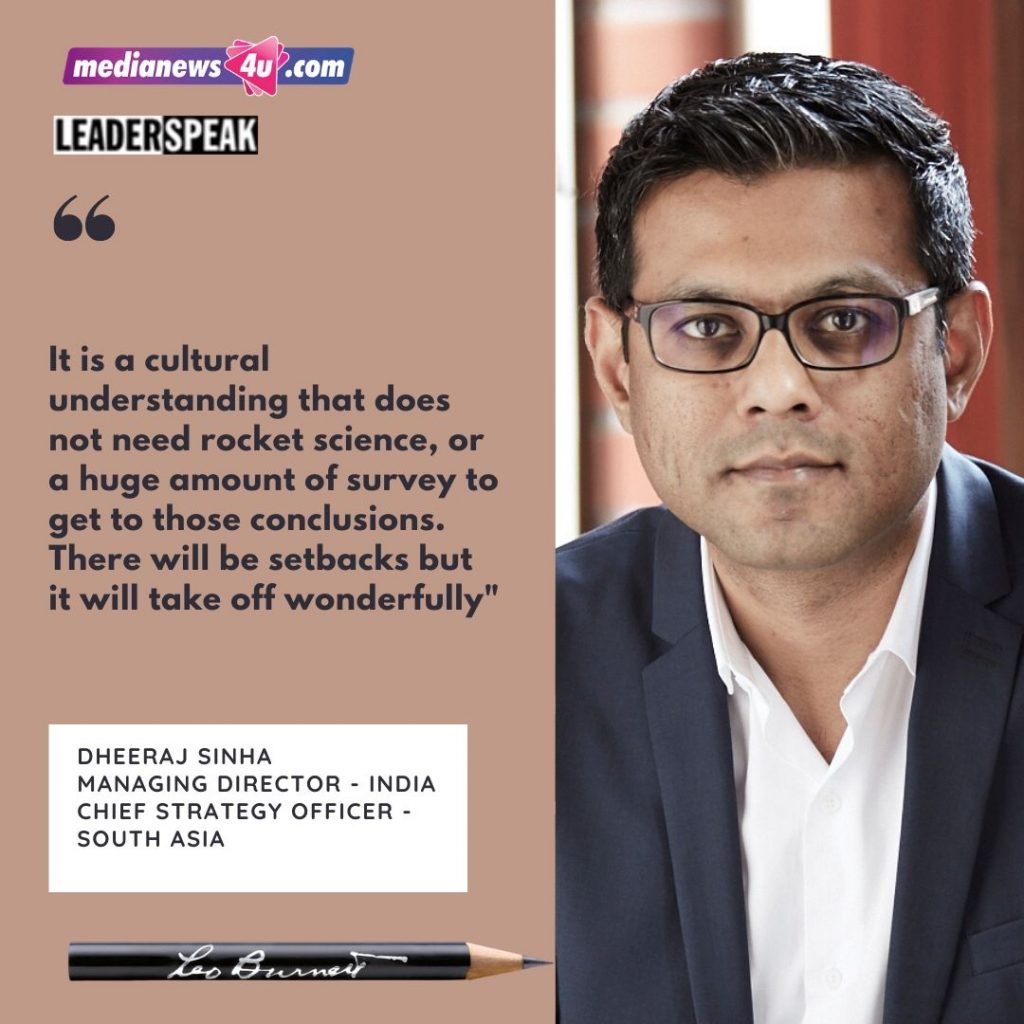
What drives you and what is your positive mantra during this crisis?
The idea of positive narrative and in life, job or any industry it is so easy to build negative narrative, even I can start talking about something, and we can be really depressed about the situation in one minute time. We can start talking about the state of advertising business and we can convey to friends about it, we can start talking about the state of economy, it is so easy to go down a negative narrative but I feel that a positive narrative is a biggest weapon that a leader has in today’s time to energize the people to make people feel that they are all in it together, you don’t have to pretend that where this will go and nobody knows so if you are positive and you are navigating it, your battle is already half won. The power of positive narrative building is the biggest weapon and that is what we use at Leo Burnett as well, I think CEOs nowadays should see themselves as Chief Energy Officers that if you can drive the energy of the organization you are well on your path to a positive workplace.
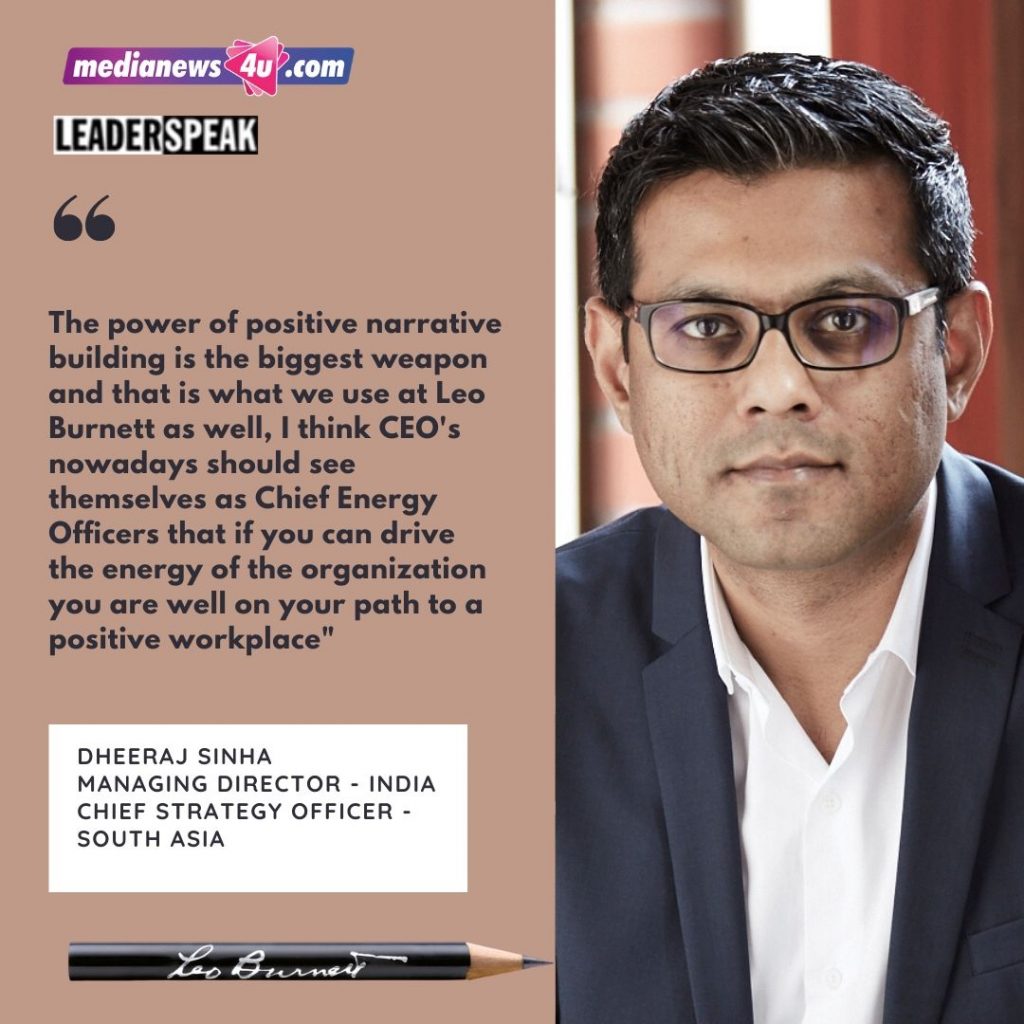
During this lockdown we have seen a huge spike in TV and OTT viewership how are brands looking at their advertising strategies and do you think these sectors will benefit out of this spike in viewership?
Unfortunately, what happened is that while there was a spike in the viewership, a lot of brands were suffering from lockdown of Demand and Distribution, many of these platforms have unfortunately not been able to convert the spike in viewership into revenue as the demand was not there for some of those products and distribution was not in place. This behaviour is going to continue, people have suddenly gotten used to OTT platform and are going to continue and you will see that real proof of that change from now on as the markets are beginning to open, distribution is being normalized to a large extent and you see some bit of consumer demand beginning to come back, some semblance of a ‘U’ curve happening. Now you will see brands coming back on TV and on OTT platforms as there are being able to produce new communication and putting it there, earlier they could not predict any demand and therefore they did not invest in advertising but now that you are seeing a comeback on demand. They could not use it at that point in time when there was a spike but they are going to benefit it from now.
Are you seeing in the near future Print and OOH coming back into the media planners a list of where the brand would put its money?
100% hundred percent, do not believe these people, they are very keen to write a headline and these are clever clickbait headlines. As they are eager for a headline they write an epitaph for each of these mediums. All mediums will evolve right, the outdoor campaign that we did for Spotify we started with social listening on people’s issues and moods in particular geographies and that became a campaign which is an outdoor campaign which I call India’s first physical and digital campaign ‘Phygital Campaign’, and we put 1153 of those hoardings across India, JIO targeted messaging and that chatter, there was a playlist for that and there were hoardings for that. There was a hoarding in Dadar where we said, go down here by choice but by chance for that.
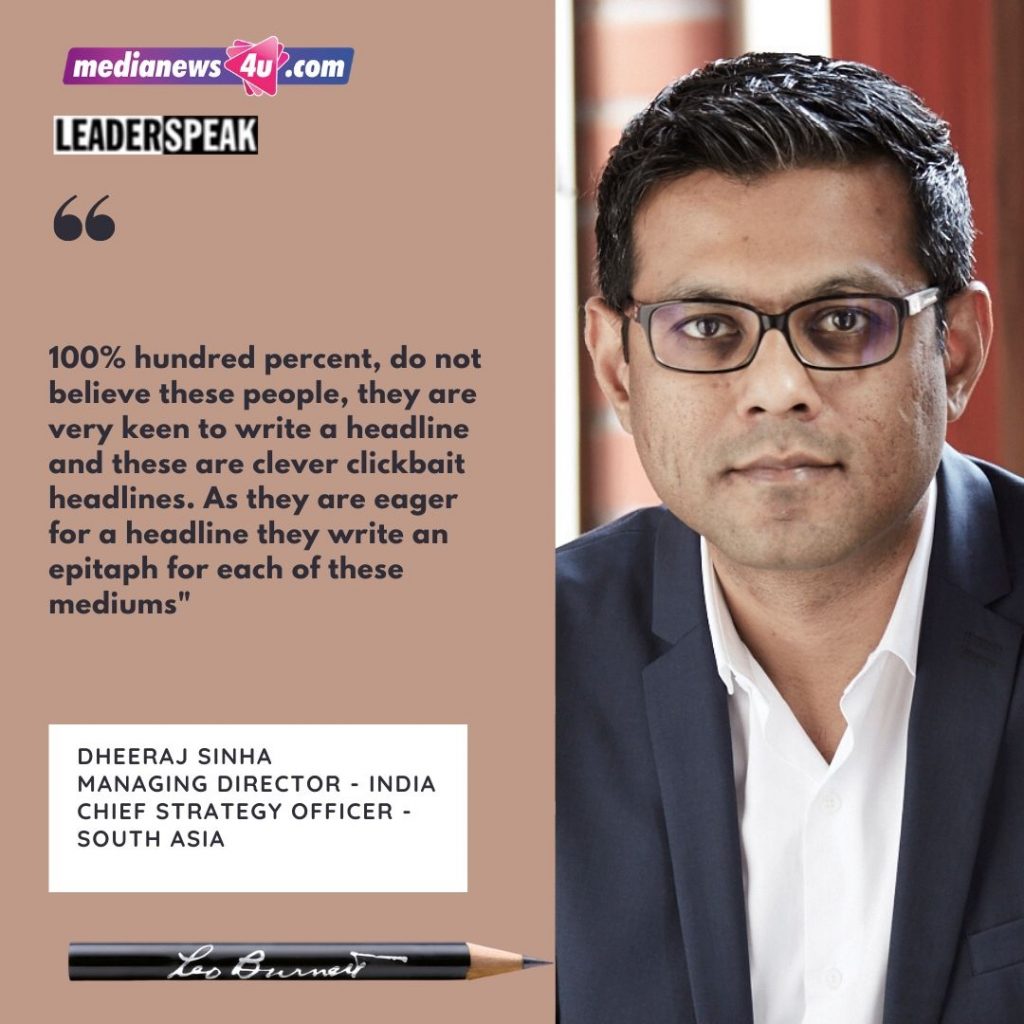
It became a huge social chatter and the traditional OOH became part of a digital consumer journey, the medium got re invented. Mediums will get reinvented but I clearly see a continued role for Print and OOH, and we also forget a large part of India which is still getting into literacy learning to read and write, and a newspaper is something very aspirational in India and the data that there has been a rise in vernacular readership.
What is your message to the young millennials who have never seen something like this before in their life?
I would say that we have to harness all our positivity, positive energy and navigate through this, it is not insurmountable and nothing lasts forever and nothing ends forever, so this 100% change what will help everybody get through this in the sense of energy and being in it together.
I keep telling my team that hold our hands and get through it, lockdown is seeing various kind of issues, there are lot of people who are going through issues, as there is no change of space, and you wake up in the morning from your bedroom you go to the kitchen, from there back to the bedroom. You have to hold each other’s hand and help each other navigate positive energy. If you do it well you will come out of it successfully.
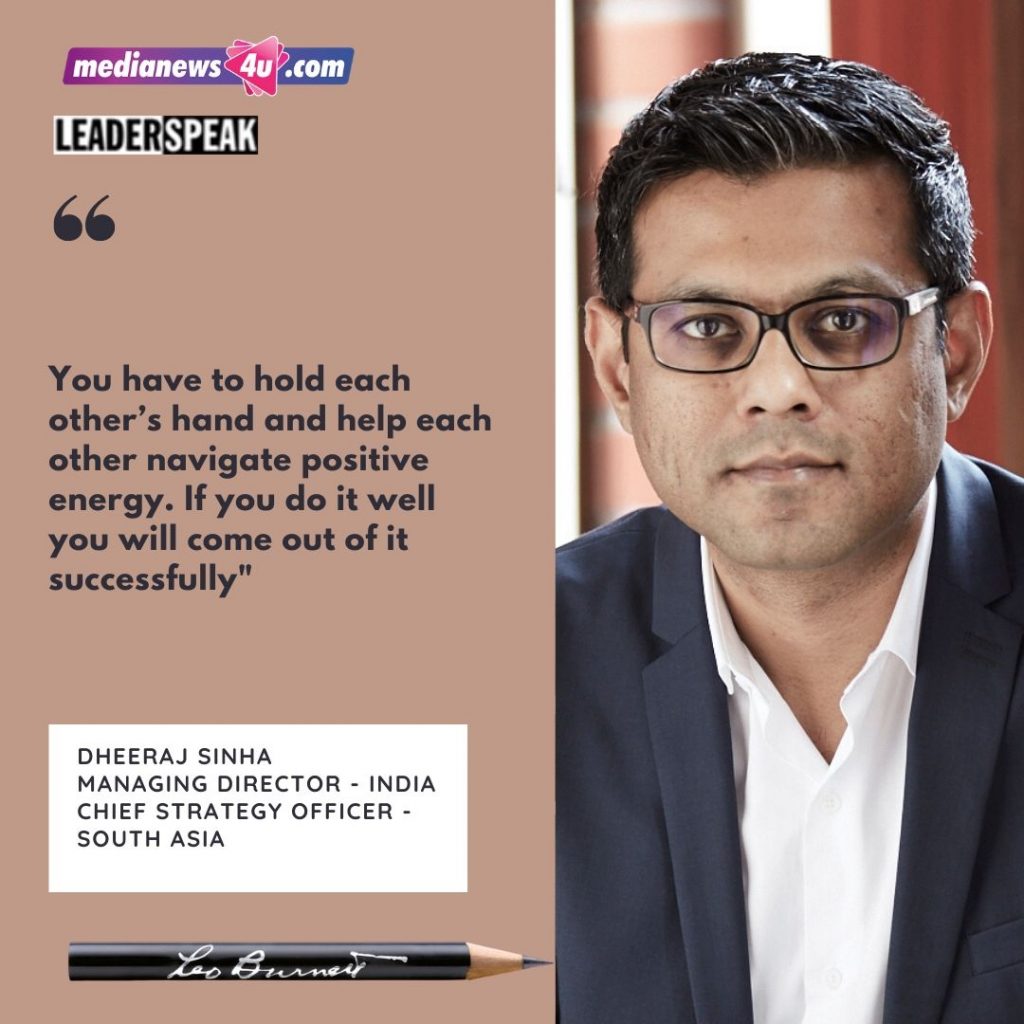
Other than authorizing to books, any other hobbies and what are your go to activities over the weekend?
I am into many things, I am a tinkerer. The advantage of lockdown is that I have been at home or else I would be traveling every month. I have a five-year-old and I have a 14-year-old and I am spending time with them and I am very passionate about listening to music, I am back at it. Spotify is a brand that we work on so I am discovering listening to music all over again and before lockdown my key cooking items were omelette and Maggie but now six or seven items I can cook, now I can toss up right from oriental dishes to Italian dishes and I have taken charge of doing dinners a few nights.
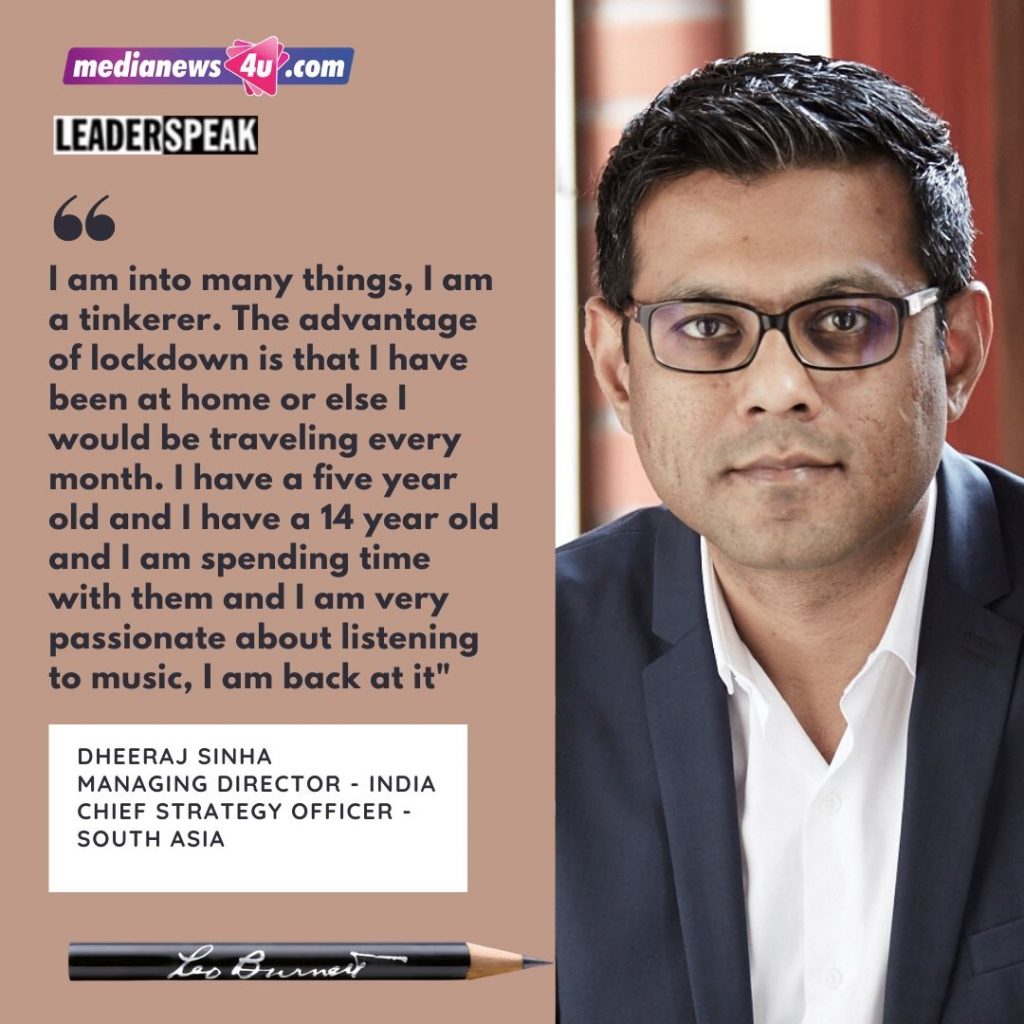
In a normal scenario weekend activities would have been different I mean we are so intense, when you are building an organization you are so absorbed by the whole idea and there is no difference between work and life, that becomes your life, all the time dreaming about what to do, you are making things happen. If you are not traveling, if you are not pitching, you are meeting somebody that you are hiring, reviewing work, you are writing stuff, you know so honestly, I mean, I hate to say this but I was totally consumed by building the organization and it is very intense as that is your obsession and that actually does not leave you.

